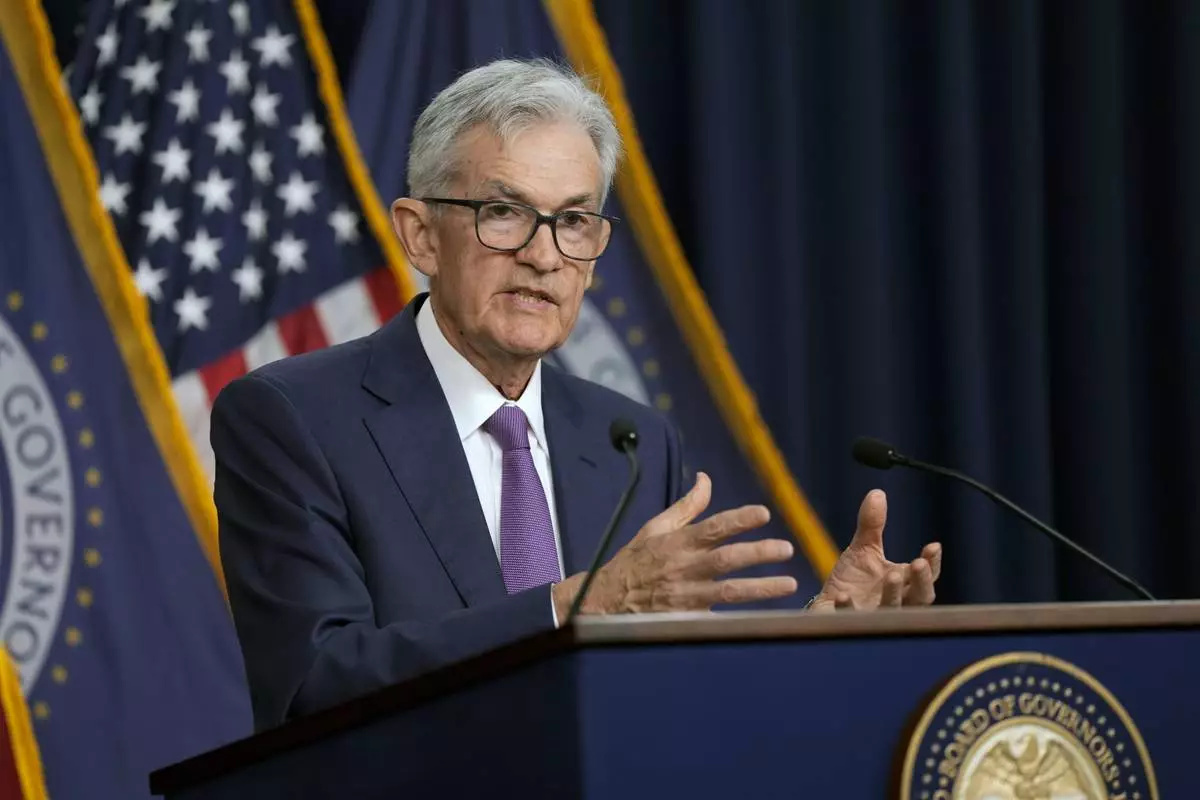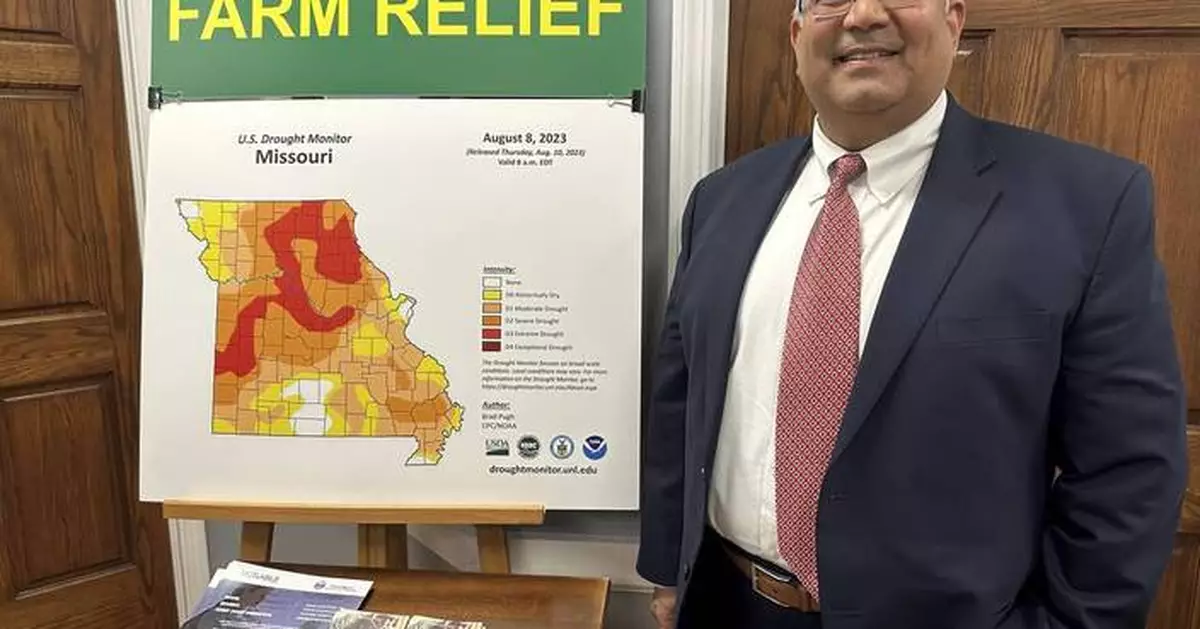JEFFERSON CITY, Mo. (AP) — Missouri lawmakers gave final approval Thursday to significantly expand a low-interest loan program for farmers and small businesses, in a move that reflects strong consumer demand for such government aid amid persistently high borrowing costs.
The legislation comes as states have seen surging public interest in programs that use taxpayer funds to spur private investment with bargain-priced loans. Those programs gained steam as the Federal Reserve fought inflation by repeatedly raising its benchmark interest rate, which now stands at a 23-year high of 5.3%.
Higher interest rates have made virtually all loans more expensive, whether for farmers purchasing seed or businesses wanting to expand.
Under so-called linked-deposit programs, states deposit money in banks at below-market interest rates. Banks then leverage those funds to provide short-term, low-interest loans to particular borrowers, often in agriculture or small business. The programs can save borrowers thousands of dollars by reducing their interest rates by an average of 2-3 percentage points.
When Missouri Treasurer Vivek Malek opened up an application window for the program in January, he received so many requests that he had to close the window the same day.
Malek then backed legislation that would raise the program’s cap from $800 million to $1.2 billion. That bill now goes to Gov. Mike Parson.
“The MOBUCK$ program has skyrocketed in demand with farmers, ranchers and small businesses, especially during these times of high interest rates," Malek said in an emailed statement Thursday praising the bill's passage.
The expansion could cost the state $12 million of potential earnings, though that could be partly offset by the economic activity generated from those loans, according to a legislative fiscal analysis.
Not all states have similar loan programs. But neighboring Illinois is among those with a robust program. In 2015, Illinois' agricultural investment program had just two low-interest loans. Last year, Illinois made $667 million of low-rate deposits for agricultural loans. Illinois Treasurer Michael Frerichs recently raised the program's overall cap for farmers, businesses and individuals from $1 billion to $1.5 billion.

FILE - Missouri Treasurer Vivek Malek stands near a poster promoting drought conditions and state aid programs, Jan. 4, 2024, at his Capitol office in Jefferson City, Mo. Agricultural entities are among several categories of businesses that can receive low-interest loans backed by deposits of state funds made by the treasurer's office. Missouri lawmakers gave final approval Thursday, April 18, to significantly expand a low-interest loan program for farmers and small businesses. (AP Photo/David A. Lieb, File)
WASHINGTON (AP) — The Federal Reserve on Wednesday emphasized that inflation has remained stubbornly high in recent months and said it doesn’t plan to cut interest rates until it has “greater confidence” that price increases are slowing sustainably to its 2% target.
The Fed issued its decision in a statement after its latest meeting, at which it kept its key rate at a two-decade high of roughly 5.3%. Several hotter-than-expected reports on prices and economic growth have recently undercut the Fed’s belief that inflation was steadily easing. The combination of high interest rates and persistent inflation has also emerged as a potential threat to President Joe Biden’s re-election bid.
“In recent months," Chair Jerome Powell said at a news conference, “inflation has shown a lack of further progress toward our 2% objective."
“It is likely that gaining greater confidence,” he added, "will take longer than previously expected.”
The Fed chair stressed, as he has before, that the central bank's decision on when to cut rates will depend on the latest economic data. But he struck a note of optimism, saying, “My expectation is that over the course of this year, we will see inflation move back down.”
Wall Street traders cheered the prospect that the Fed will cut rates at some point this year, even if not as soon as they had hoped. Share prices surged and yields fell during Powell's news conference, with stock indexes all rising more than 1%.
Still, the central bank’s latest message reflects a shift in its timetable on interest rates. As recently as their last meeting on March 20, the Fed’s policymakers had projected three rate reductions in 2024, likely starting in June. Rate cuts by the Fed would lead, over time, to lower borrowing costs for consumers and businesses, including for mortgages, auto loans and credit cards. But given the persistence of elevated inflation, financial markets now expect just one rate cut this year, in November, according to futures prices tracked by CME FedWatch.
The Fed’s warier outlook stems from three months of data that pointed to chronic inflation pressures and robust consumer spending. Inflation has cooled from a peak of 7.1%, according to the Fed’s preferred measure, to 2.7%, as supply chains have eased and the cost of some goods has actually declined.
Average prices, though, remain well above their pre-pandemic levels, and the costs of services ranging from apartment rents and health care to restaurant meals and auto insurance continue to surge. With the presidential election six months away, many Americans have expressed discontent with the economy, notably over the pace of price increases.
On Wednesday, the Fed announced that it would slow the pace at which it’s unwinding one of its biggest COVID-era policies: Its purchase of several trillion dollars in Treasury securities and mortgage-backed bonds, an effort to stabilize financial markets and keep longer-term rates low.
The Fed is now allowing $95 billion of those securities to mature each month, without replacing them. Its holdings have fallen to about $7.4 trillion, down from $8.9 trillion in June 2022, when it began reducing them. On Wednesday, the Fed said it would, in June, reduce its holdings at a slower pace, and allow a total of $60 billion of bonds to run off each month.
By cutting back its holdings, the Fed could contribute to keeping longer-term rates, including mortgage rates, higher than they would be otherwise. That’s because as it reduces its bond holdings, other buyers will have to buy the securities instead, and rates might have to rise to attract the needed buyers.
The U.S. economy is healthier and hiring stronger than most economists thought it would be at this point. The unemployment rate has remained below 4% for more than two years, the longest such streak since the 1960s. And while economic growth reached just a 1.6% annual pace in the first three months of this year, consumer spending grew at a robust pace, a sign that the economy will keep expanding.
That economic strength has led some Fed officials to speculate that the current level of interest rates might not be high enough to have the cooling effect on the economy and inflation that they need — and that the policymakers might even need to switch back to rate increases.
But at Wednesday's news conference, Powell sought to dispel such speculation, saying, "I think it’s unlikely that the next policy rate move will be a hike.”
He also downplayed any concerns that the economy might be at risk of sliding into “stagflation” — a toxic combination of weak growth, high unemployment and elevated inflation that afflicted the United States during the 1970s.
“I was around for stagflation," Powell said, "and it was 10% unemployment, it was high-single-digit inflation. And very slow growth. Right now, we have 3% growth which is pretty solid growth, I would say, by any measure. And we have inflation running under 3%. ...I don’t see the ‘stag’ or the ‘flation,’ actually.”

Federal Reserve Board Chair Jerome Powell speaks during a news conference at the Federal Reserve in Washington, Wednesday, May 1, 2024. (AP Photo/Susan Walsh)

Federal Reserve Board Chair Jerome Powell speaks during a news conference at the Federal Reserve in Washington, Wednesday, May 1, 2024. (AP Photo/Susan Walsh)

Federal Reserve Board Chair Jerome Powell speaks during a news conference at the Federal Reserve in Washington, Wednesday, May 1, 2024. (AP Photo/Susan Walsh)

Federal Reserve Board Chair Jerome Powell speaks during a news conference at the Federal Reserve in Washington, Wednesday, May 1, 2024. (AP Photo/Susan Walsh)

Federal Reserve Board Chair Jerome Powell speaks during a news conference at the Federal Reserve in Washington, Wednesday, May 1, 2024. (AP Photo/Susan Walsh)

Federal Reserve Board Chair Jerome Powell arrives for a news conference at the Federal Reserve in Washington, Wednesday, May 1, 2024. (AP Photo/Susan Walsh)

Federal Reserve Board Chair Jerome Powell speaks during a news conference at the Federal Reserve in Washington, Wednesday, May 1, 2024. (AP Photo/Susan Walsh)

Federal Reserve Board Chair Jerome Powell arrives for a news conference at the Federal Reserve in Washington, Wednesday, May 1, 2024. (AP Photo/Susan Walsh)

Federal Reserve Board Chair Jerome Powell speaks during a news conference at the Federal Reserve in Washington, Wednesday, May 1, 2024. (AP Photo/Susan Walsh)

FILE - Federal Reserve Board chair Jerome Powell speaks during a news conference at the Federal Reserve in Washington, March 20, 2024. The Federal Reserve wraps up its two-day policy meeting Wednesday, May 1, 2024. Most analysts expect that the central bank will leave its benchmark borrowing rate alone for the sixth straight meeting. (AP Photo/Susan Walsh, File)




















